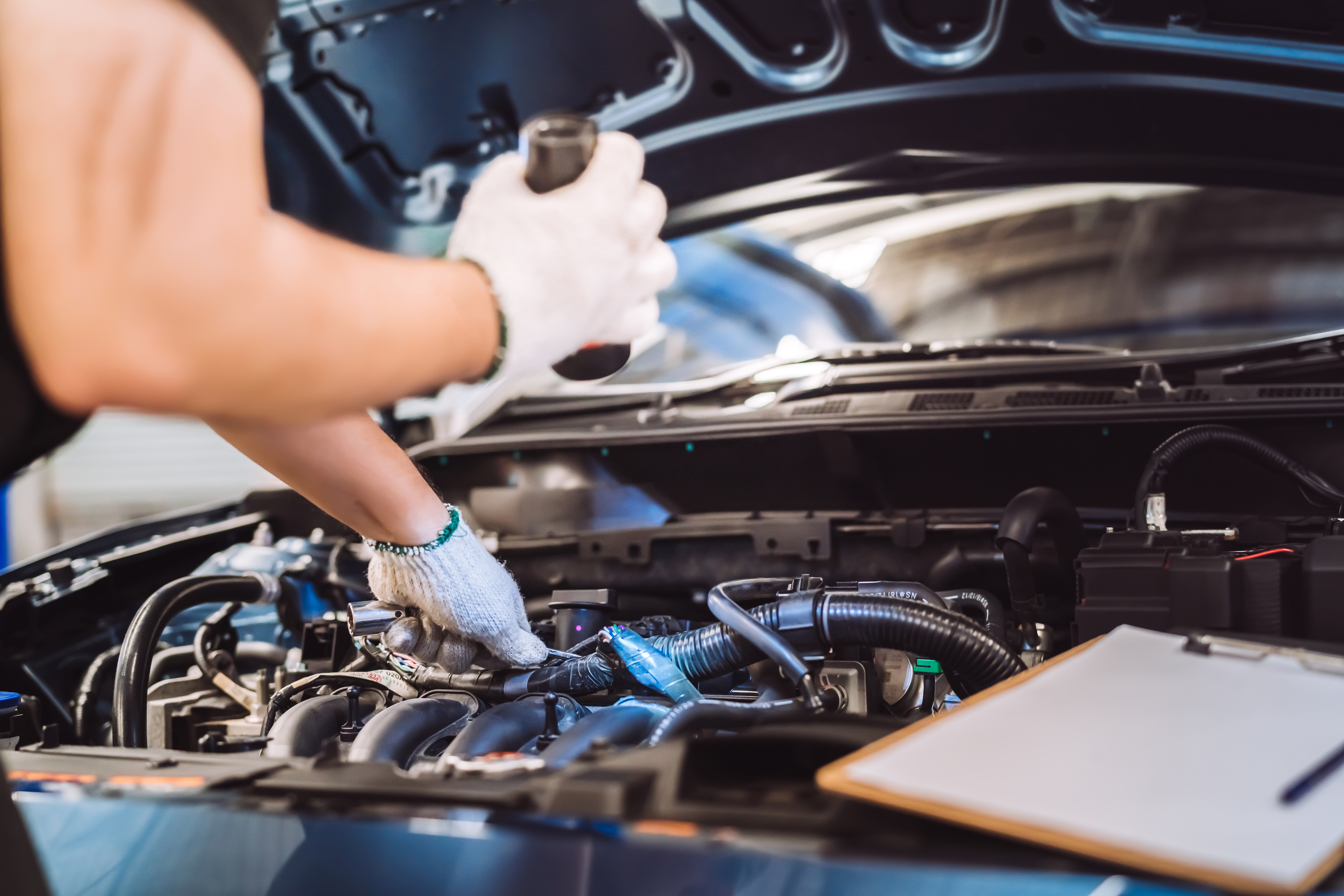Coolant is your engine’s sports drink. It keeps things cool, prevents rust, and runs the heater. When it gets old or dirty, your GMC runs hot and cranky. A coolant flush is a way to change the old coolant for fresh, happy fluid.
Sign 1: Temperature gauge creeping higher (or random overheating)
If your Sierra, Acadia, or Terrain runs hotter than usual—especially in traffic or on hills—old coolant may not be pulling heat away fast enough. Consistent heat = time to flush and inspect.
Sign 2: Heater blows lukewarm air
Weak cabin heat on cold mornings often means gunked-up coolant or sludge, or a partially clogged heater core. Fresh coolant restores proper flow so the heater can actually… heat.
Sign 3: Coolant looks brown, sludgy, or has floaties
Pop the reservoir cap (engine cold only). Healthy Dex-Cool is typically orange or reddish. If it’s brown, murky, or full of flakes, these are contaminants indicating corrosion is happening inside—flush ASAP.
Sign 4: Sweet smell, damp spots, or frequent top-offs
A maple-syrup smell, orange stains near hose connections, or a low reservoir every few weeks = leaks. You still flush (old coolant can accelerate corrosion), but also fix the leak—hose, water pump, radiator, or clamp.
Sign 5: Dashboard warnings or coolant message
Low-coolant or overheating alerts mean the system is losing fluid or can’t control temps. Don’t ignore these; heat is the engine’s #1 enemy.
What a Coolant Flush Includes
- Drain old coolant completely from the system, including the radiator and engine block, making sure all coolant is thoroughly drained and captured for recycling.
- The system may be flushed with distilled water before refilling. Fill with a system-safe cleaner (shop dependent), circulate, then drain again to ensure the system is properly flushed and free of contaminants.
- Inspect hoses, clamps, radiator cap, thermostat operation, and water pump area. Check for any coolant left in the engine block or other areas that could harbor old fluid or debris.
- Refill with the correct Dex-Cool-spec coolant after the system is thoroughly flushed, and properly bleed air from the system to ensure optimal performance.
- Verify heater performance and operating temperature, and confirm that no contaminants are left in the system after flushing.
Pro tip: Do not mix coolant types. Stick with the GM-approved Dex-Cool spec your GMC calls for.
How Often Should You Flush?
- Many late-model GMCs with Dex-Cool recommend the coolant be changed every few years or at specific mileage intervals, such as up to ~5 years/150,000 miles, under normal conditions.
- Severe use (heavy towing, lots of idling, extreme temps) can justify earlier service.
- When in doubt, follow the owner’s manual and check the coolant each year; it may need to be changed based on its condition.
Local Cost Breakdown (what you’ll typically see)
- Standard flush (most GMC crossovers/sedans):****$120–$220
- Truck/SUVs with larger systems (Sierra, Yukon, HD):****$180–$300 (truck models may have higher flush costs due to larger coolant capacity)
- Add-ons if needed:
- Radiator cap: $15–$30
- Thermostat (if sticking): $120–$250 installed
- Upper/lower hoses: $120–$220 installed (each)
- Leak dye/pressure test: $20–$60
- Add-ons if needed:
These prices include the cost of bought coolant and any necessary additives.
A DIY flush can be a cheap alternative, often costing much less if you handle the labor and only pay for coolant and supplies.
Prices swing with coolant capacity, shop rate, and whether rust inhibitors/cleaners are used. Always ask for the out-the-door number.
DIY vs Pro
- DIY drain/fill is cheaper but doesn’t remove as much old fluid, and bleeding air can be tricky on some GMC engines. A DIY flush is fine for most people if you follow the steps carefully and use distilled water for refilling. Don’t skip important steps like draining from the lower radiator hose or using a drain plug to get as much old coolant out as possible.
- Pro flush gets more contamination out, verifies heater/core flow, and pressure-tests for leaks. The professional method is the best way to ensure a thorough flush, and most people prefer the pro flush for peace of mind. For modern systems, it’s usually worth the price.
After any flush, take a short test drive to check for leaks, overheating, or other issues.
Simple Owner Checklist
- Peek at coolant color (engine cold)
- Note temp gauge behavior on hills/traffic
- Test heater at idle and while driving
- Look for orange crust near hoses/cap
- Check driveway for drips after parking overnight
- After draining, check for any coolant left in the system to avoid leaving contaminants
- Ensure proper refilling with fresh coolant after a flush
FAQs
Can old coolant really cause damage?
Yep. Worn coolant loses corrosion protection and can clog small passages (heater core, radiator), stressing the water pump and thermostat. If not flushed, contaminants and sludge can build up in the block, leading to overheating and expensive repairs.
Is a quick drain enough?
Better than nothing, but a quick drain usually removes only half the coolant—sometimes even less. A full flush ensures the system is thoroughly flushed and more contaminated fluid is drained, restoring inhibitor strength and protecting the engine.
Do I need to check my thermostat with every flush?
Not automatically. Replace only if it’s sticking or temps are inconsistent.
Why is my heater cold after a flush?
Usually trapped air. The system needs a proper bleed procedure so coolant can circulate through the heater core. Also, make sure refilling is done correctly to avoid air pockets.
Should I use distilled water for flushing?
Yes, always use distilled water when flushing and refilling the cooling system. Tap water can introduce minerals that cause corrosion and sludge buildup. Distilled water helps keep the system clean and prolongs coolant life.


